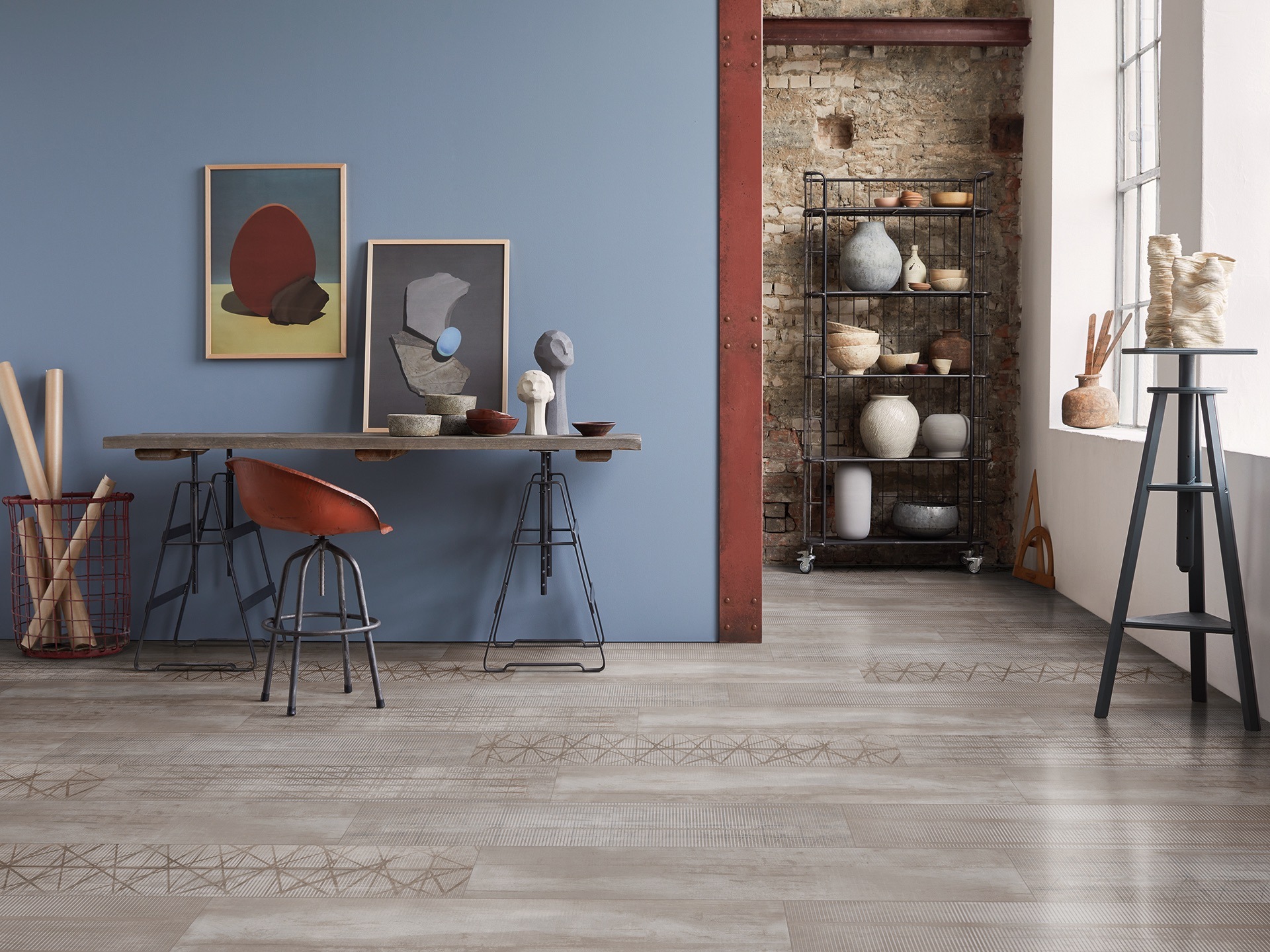How to choose laminate flooring
Laminate flooring doesn't have the best reputation, but manufacturers have been working hard, and modern laminates can be a great flooring choice
Laminate flooring is a relatively cheap flooring made from wood fibreboard covered with a melamine coating that usually simulates the look of wood, stone or tiles. It is easy to install and clean, and durable. Innovations in the way that it’s made have improved durability and the look, to the point where it’s a credible alternative to more expensive flooring options.
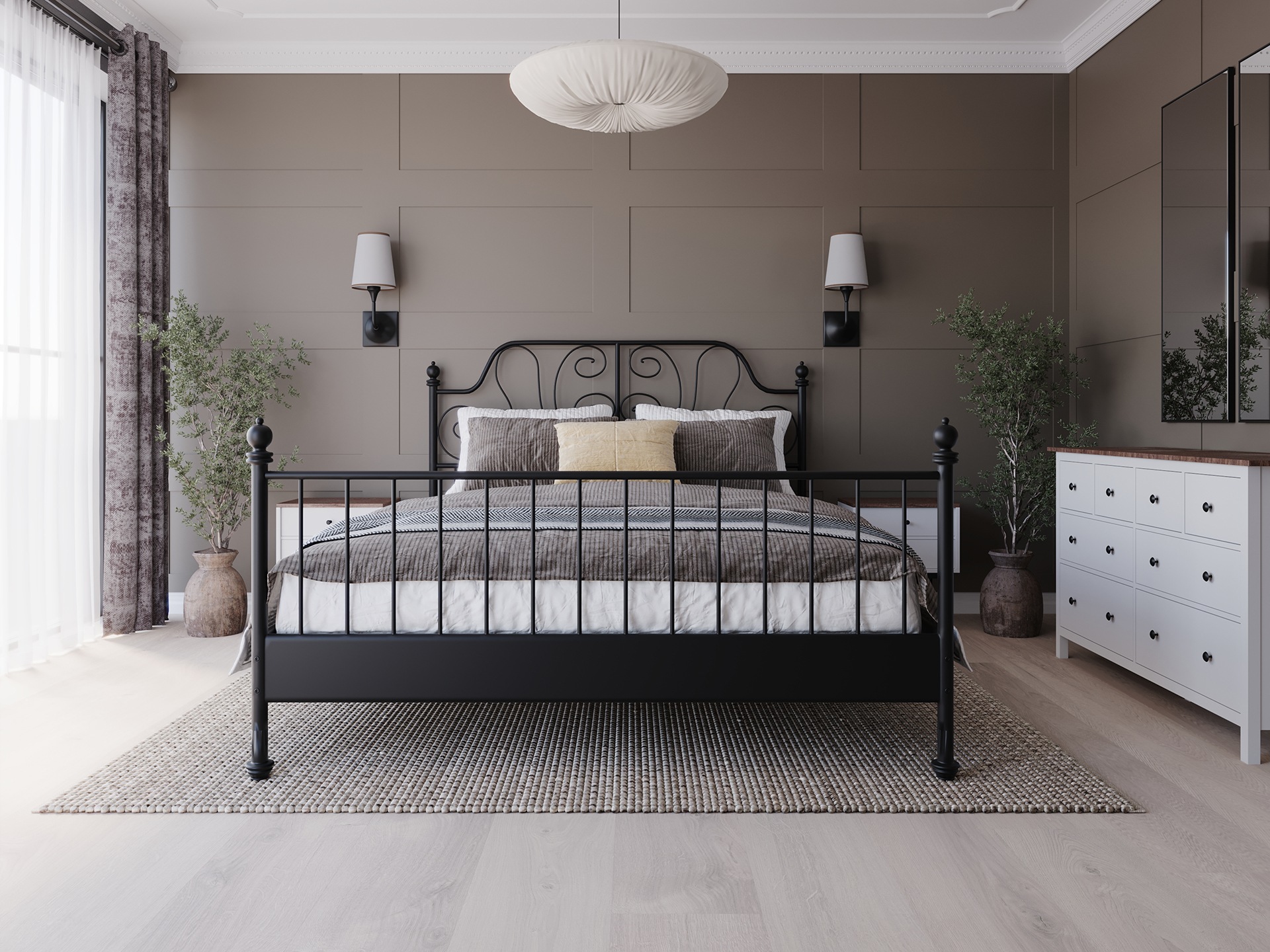
Image credit: The Wood Flooring Co. Manor House Oak Laminate Flooring, £26.77 per m2
What is laminate made of?
The structure of laminate flooring resembles a sandwich. The filling – the core of the flooring – is hardboard, otherwise known as high density fibreboard (HDF).
Nowadays the top ‘wear layer’ is often made from melamine resin. This is the tough protective layer that gives laminate its resilience. In better quality laminate this will be textured to resemble the wood, stone or tiles it is representing. This helps is look more realistic and stops it from being as slippery as some of the first laminate floors were. The best quality laminate is register embossed, which means the embossing on the surfaces matches up with the pictures of wood or stone. Often this top layer contains an anti-UV coating to stop the flooring from discolouring.
The second layer is the design layer, a high-resolution photographic print of the wood, stone or tile. On the very bottom of the laminate there is often a water-resistant underlay or backing layer. The layers are heat pressed together to form the flooring. There are different thicknesses of laminate, generally speaking the thicker the laminate the more expensive it will be.
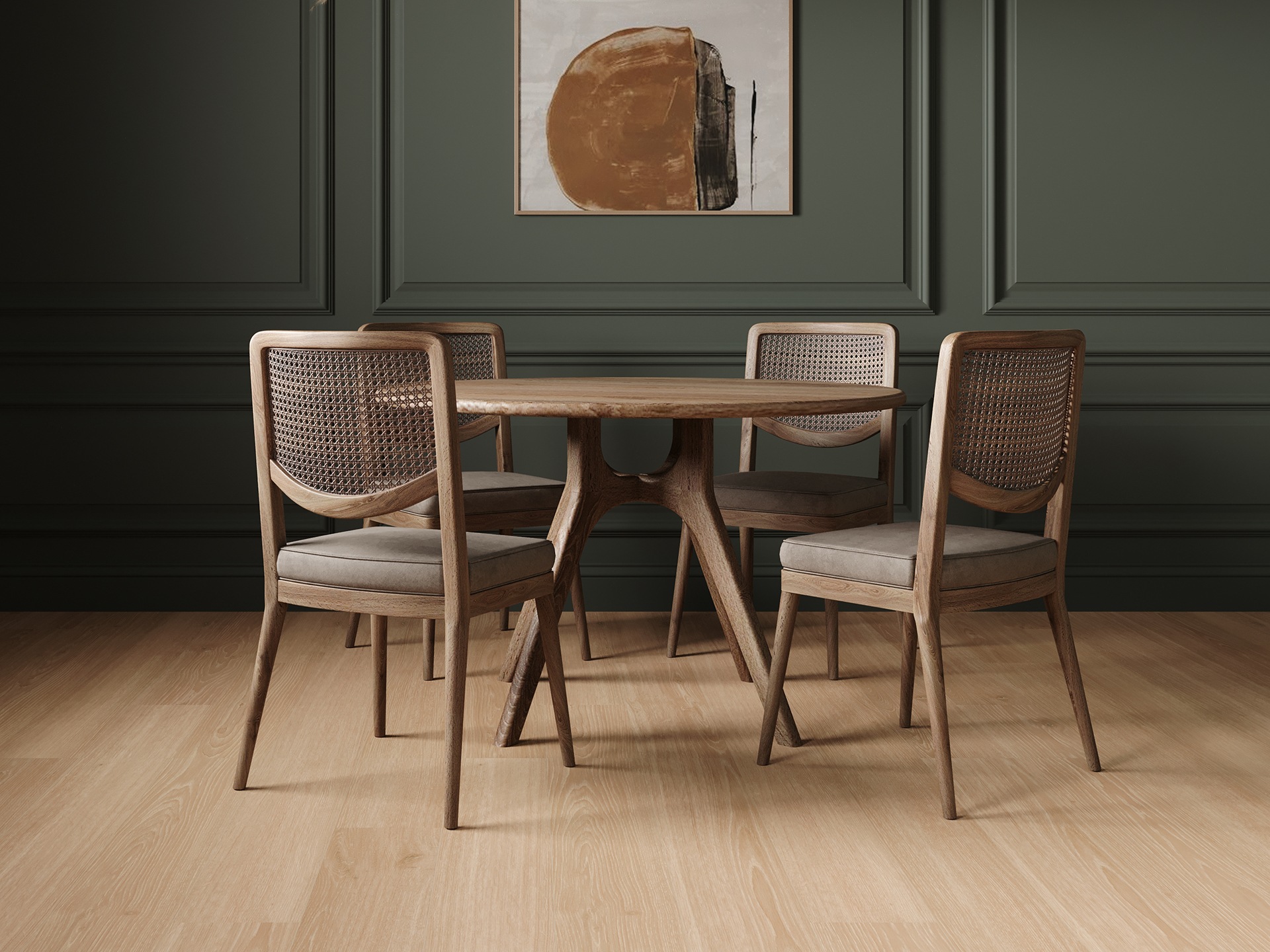
Image credit: The Wood Flooring Co. Aspen Oak Laminate, £19.16 per m2
Floating floor
Laminate comes in small plank-shaped boards that click together. They are not fixed directly to the floor, hence this is called a floating floor system. All four edges of better quality laminate sections are bevelled to make them more like real wood planks or tiles.
Designs
Most laminate flooring is designed to look like wood, some to look like tiles or stone. The more expensive the laminate, the more closely it will actually resemble wood or stone. This is not just because of the textured surface and bevelled edges: better quality laminate has higher resolution prints and a greater variety of different patterns within each pack. This gives a less uniform, more realistic final appearance. Cheap laminate might have just three different plank patterns; a high-end one, as many as ten.
Laminate is available in high gloss and matte finishes, with designs that replicate narrow and wider planks, and in many shades of grey, white and brown. Floorless Floors and Leader Floors both sell plain coloured laminate flooring. Parador have a particularly good selection of designs including Nishiki Market, a brightly coloured eclectic tile patterned laminate, and concrete-effect laminates. Quickstep also have concrete effect laminates. But, generally, the range of colours and designs is very limited. Vinyl floor covering is available in a much greater range of patterns and colours.
Herringbone
Herringbone laminate that resembles parquet floor is currently very fashionable. Because it makes use of shorter lengths of laminate arranged in a more complex pattern, it can look more like real wood than regular laminate.
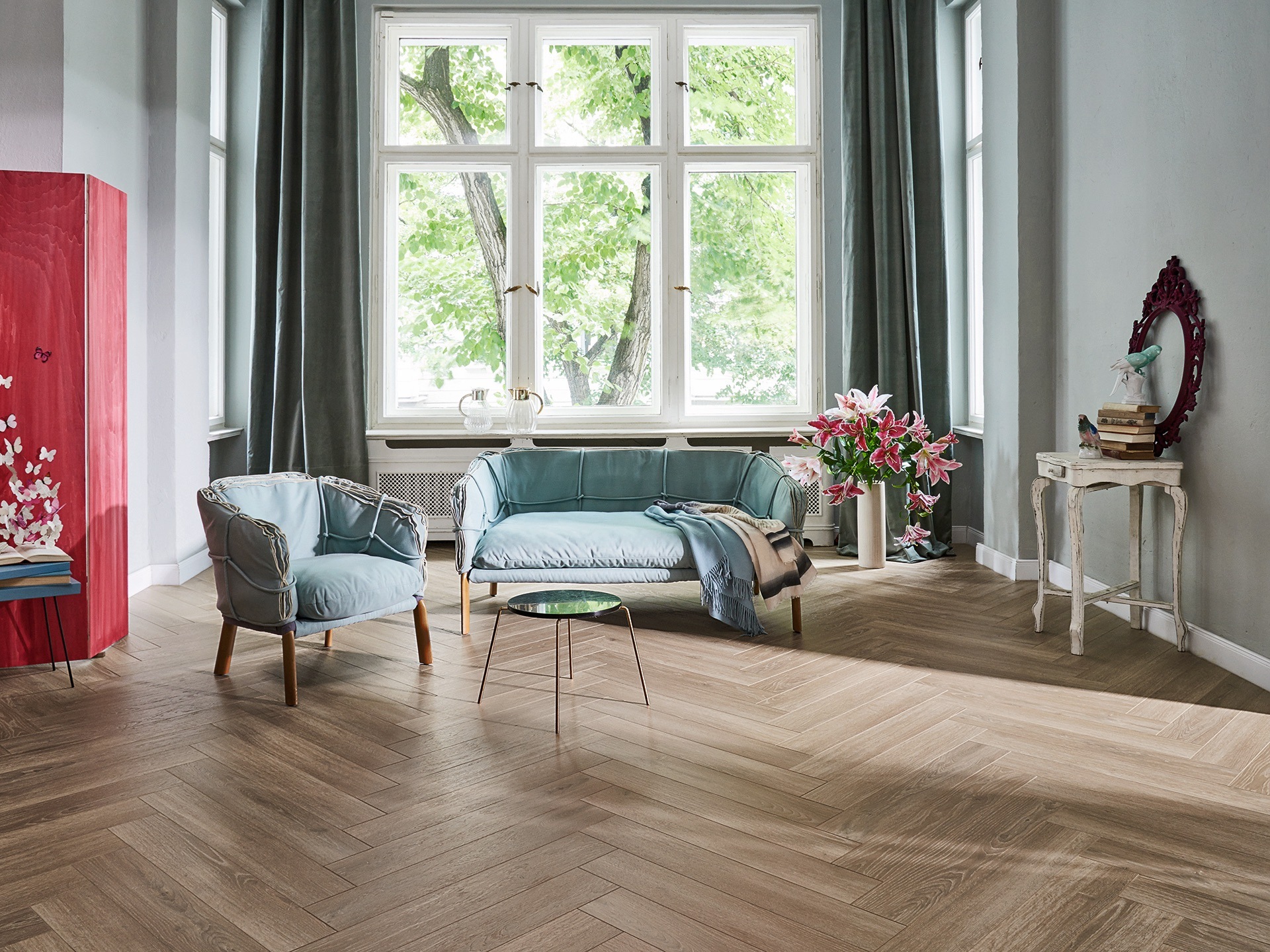
Image credit: Parador, Herringbone Oak Skyline Pearl-Grey
Long lasting
Laminate flooring can last for 25 years though it will have a shorter life in places where it gets walked on a lot. It is graded with an AC rating according to how hard-wearing it is. The most hard-wearing laminate is graded AC5 – suitable for high-traffic areas in public buildings – down to AC1. AC2 should be fine for most domestic uses.
Installing laminate
Installing laminate flooring is a job that most DIYers should be able to do. There are heaps of how-to videos on YouTube. The boards have a tongue-and-groove like mechanism that clicks them together. To work out how much to buy, multiply the width by the length of your room and add ten percent. Start from a straight wall and, if possible, install with planks running parallel to the light entering from the window. For a super neat finish, you could remove the skirting board and reinstall after the flooring is down. Alternatively, you can use beading round the edge of the room to hide the gaps and edges.
Underlay
You will usually need to use a foam underlay. This helps with sound and heat insulation and makes the floor a little softer under foot. It also provides an important barrier against moisture. Underlay has tog ratings: low tog is good if you have underfloor heating; a higher tog has better insulating properties.
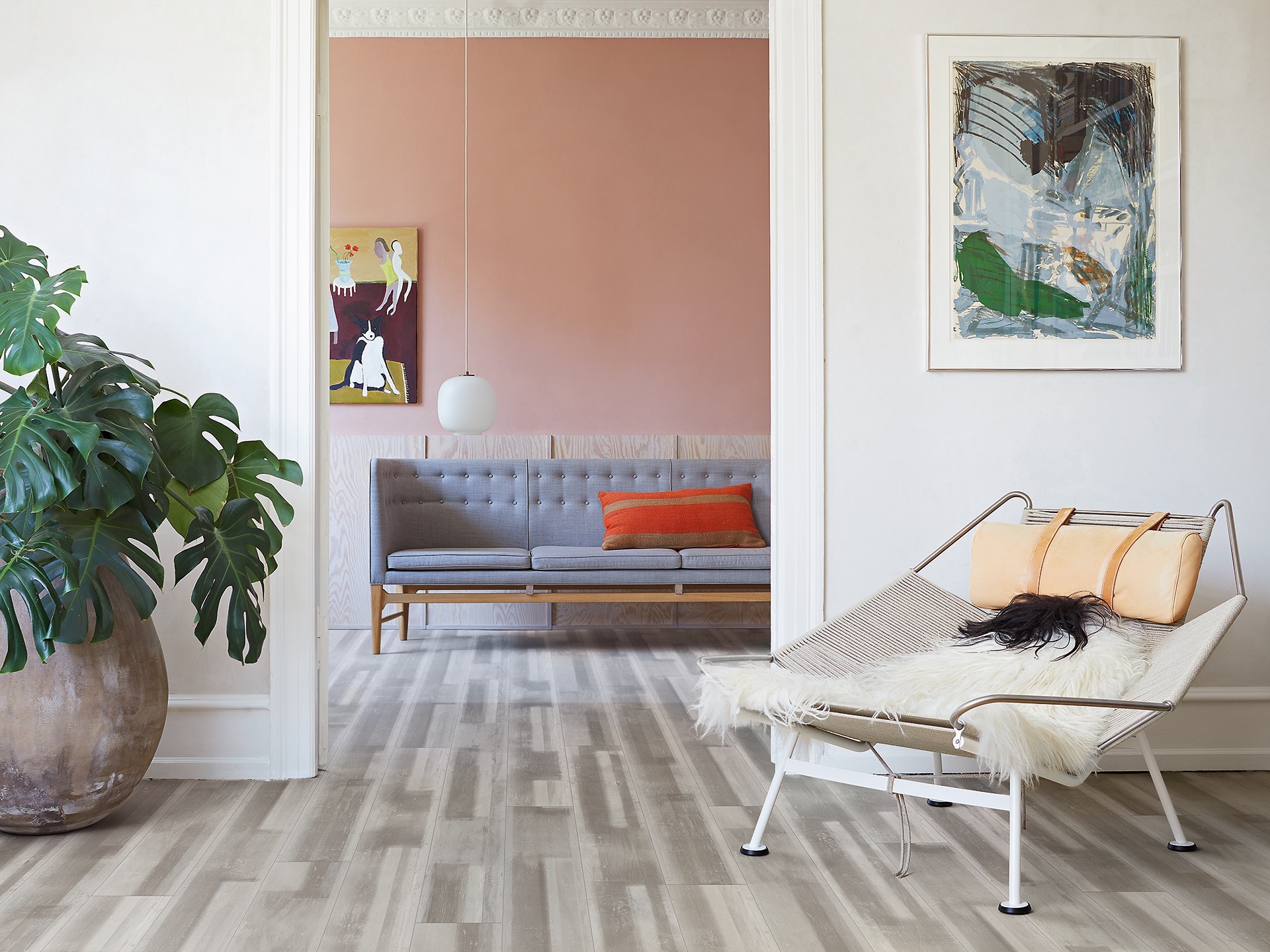
Image credit: Parador, Modular ONE, Studio Grey, Individual Plank look Wood Texture
Is it sustainable?
Laminate flooring can be made with HDF made from recycled and reclaimed wood, which means it might be more sustainable than you’d expect. Look out for flooring made from reclaimed or recycled timber, and from timber with a Forest Stewardship Council (FSC) certification, or the similar Programme for the Endorsement of Forest Certification (PEFC), which shows it comes from well managed, sustainable forests. Parador’s
Some manufacturers, such as Pergo, Parador and Quick Step, also take pride in using renewable energy to make their laminate. Others like Envirobuild plant trees or use carbon offsetting. Parador, which invented laminate in 1977,
VOCs
In the past there were legitimate concerns about the levels of volatile organic compounds (VOCs) given off by laminate flooring. Of particular concern was the formaldehyde, which can be an eye and respiratory-tract irritant, and has also been linked to more serious health problems.
However, in recent years, manufacturers have responded to these concerns by changing the way they make laminate flooring. For example, most laminate today doesn’t require adhesive, which was one of the main sources of VOCs in early laminates. And the formaldehyde in the melamine resin used to make laminate today is more inert and less likely to escape into the air in your house than was the formaldehyde in the resins used in the past.
And standards continue to improve. Both the US and the EU have recently brought in new rules setting out new lower permissible maximum levels of formaldehyde emissions. So, you can now buy laminate with peace of mind, particularly if you read product data sheets carefully and think about these issues:
- Choose laminate that meets the E1 European standard for formaldehyde emissions
- Go for laminate with the design printed using water-based ink
- Pick laminate rated A+ for VOC emissions. Or the M1 standard originally developed in Finland
- There are other certification schemes for indoor VOC emissions that manufacturers can apply to get their products classified in. These include FloorScore and the Greenguard. A good rating with one of these schemes indicates a product that is low in VOCs
- Avoid flooring containing urea formaldehyde, a cheaper resin
- Look out for laminates labelled: NAF (no added formaldehyde), NAUF (no added urea formaldehyde), or ULEF (ultra-low-emitting formaldehyde)
- Go with manufacturers who take the time to ‘off-gas’ their laminate at the factory
Cleaning laminate
You can use your vacuum, a dry mop or soft brush on laminate. Or a mop with a small amount of laminate floor cleaner. Keeping the floor clean will help to avoid it getting scratched. But the key thing is: don’t get it really wet.
If an area of laminate gets badly scratched, stained or otherwise damaged, that bit will need to be replaced. It can’t be sanded down like hardwood floors can.
Laminate pros
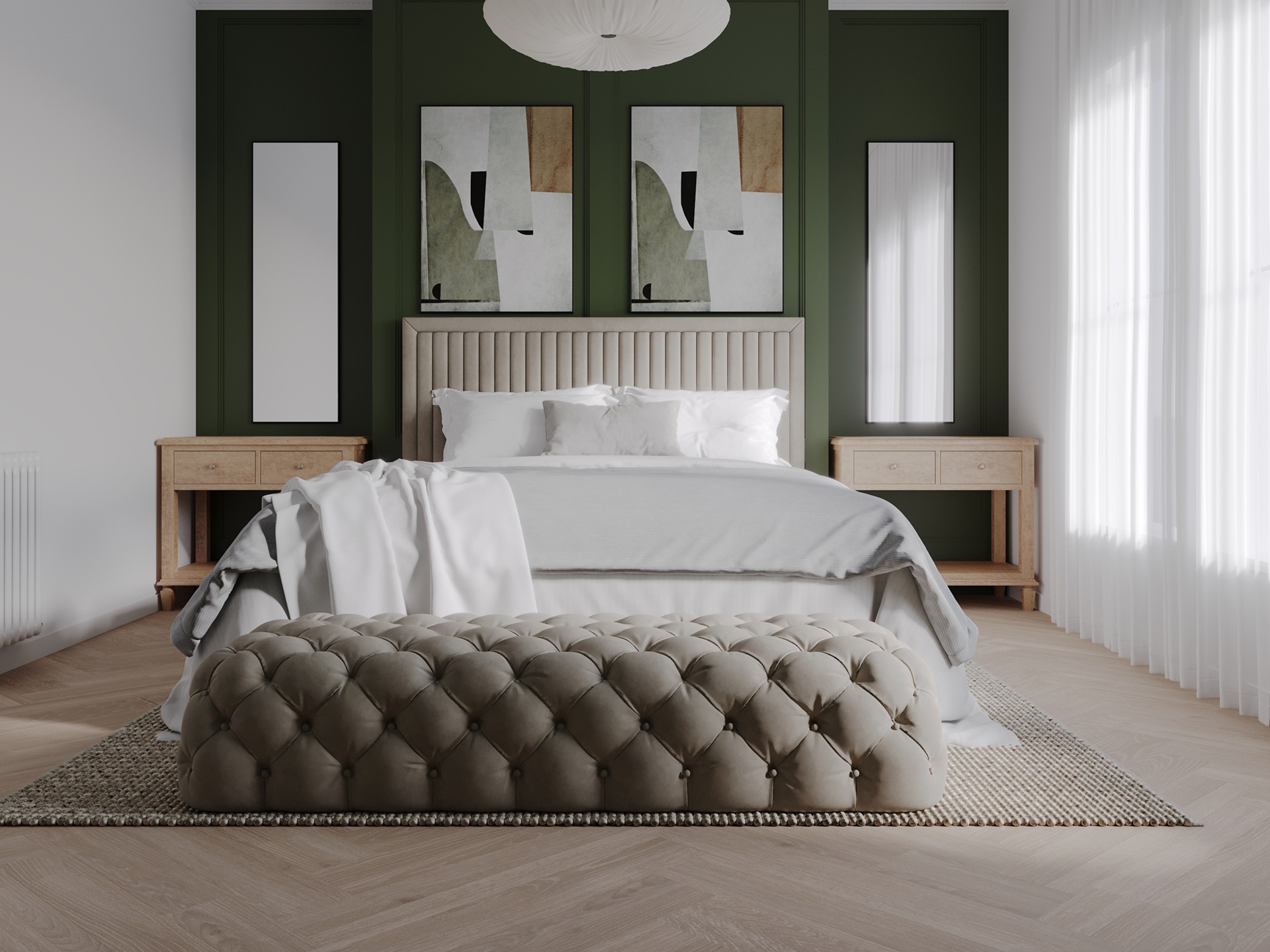
Image credit: The Wood Flooring Co. Glacier Grey Oak Laminate Plank, £19.16 per m2
All in all, then, modern laminate flooring has a lot going for it:
- It is relatively cheap: you can buy it for less than £10 per m2 up to about £70 per m2. Just remember, you get what you pay for, and buy the best quality you can afford
- It’s easy to install
- Many laminates can be laid over underfloor heating, though not over electric underfloor heating
- Laminate flooring is hard-wearing, and you don’t need to put in effort to maintain it in the way you do hardwood flooring
- It can be much more sustainable nowadays
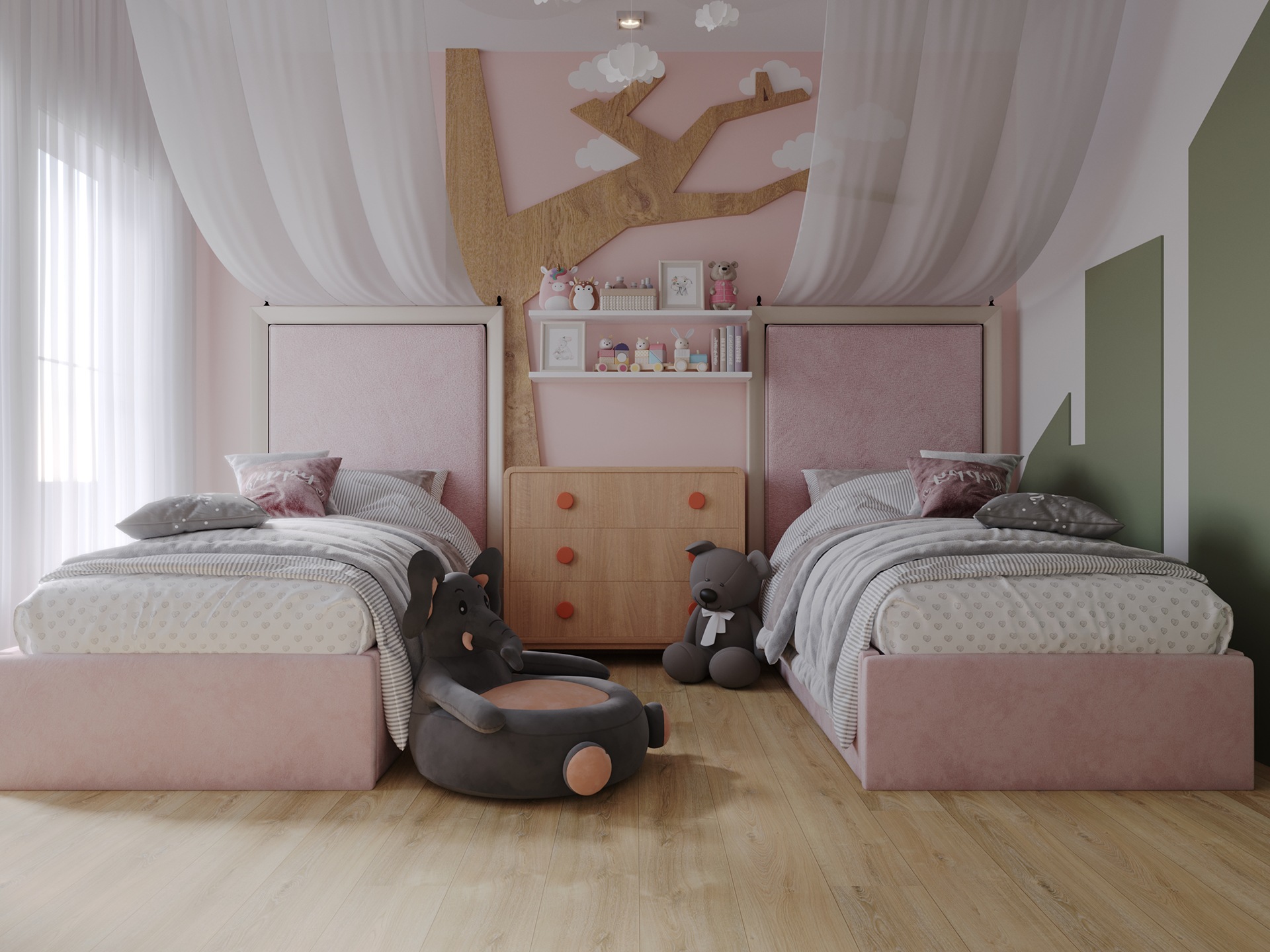
Image credit: The Wood Flooring Co. Parkland Oak Laminate, £26.77 per m2
Main con: moisture
Some people may have aesthetic issues with laminate flooring. But, at the top end of the market, there are laminates that look great. The real big con when it comes to laminate flooring has always been its inability to cope with moisture.
Moisture is kryptonite to laminate flooring. You can’t use it anywhere that is damp because if moisture gets into the hardboard layer it will swell up, then buckle and warp the floor. The way laminate is installed means it is not perfectly water tight, so you can’t allow water to stand on it, and you can’t use too much water when cleaning it. Otherwise, water will seep down into the joints, get into the HDF and make it expand. Eventually surface layers will begin to lift and maybe even peel off.
Here again though, manufacturers are innovating, and products like Wood Design Flooring from Woodpecker Flooring and Parador’s sustainable Modular ONE range – one of the best looking and sustainable laminates around – are described as waterproof. They don’t deform if they get wet because their core layer is no longer made of hardwood but from a waterproof material that doesn’t expand.
All in all, modern laminate floorings are a surprisingly good flooring option worth considering in many situations.
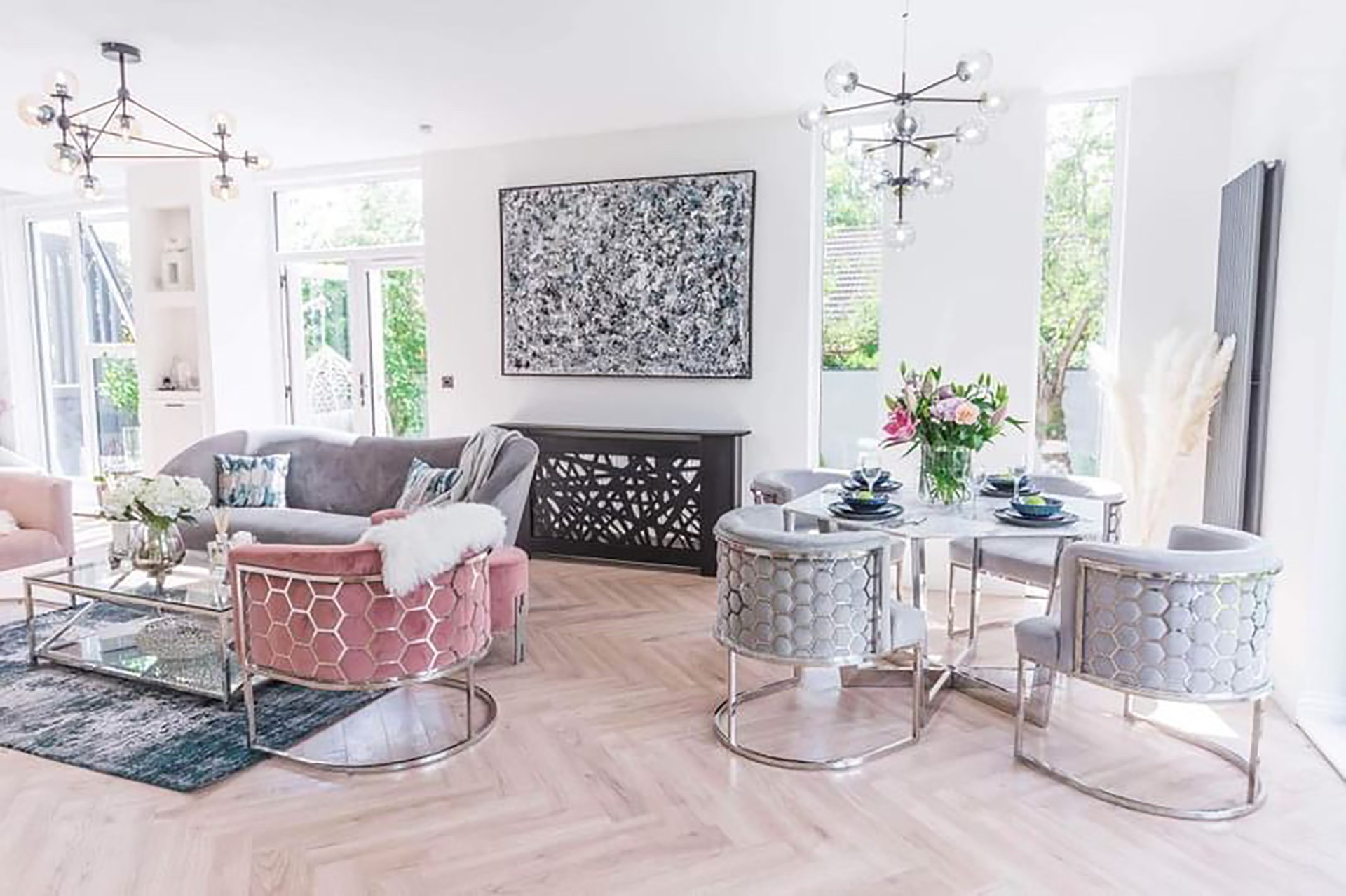
Image credit: @thepropertyfixersuk Prestige Herringbone Faded Oak 8mm Laminate from Factory Direct Flooring

